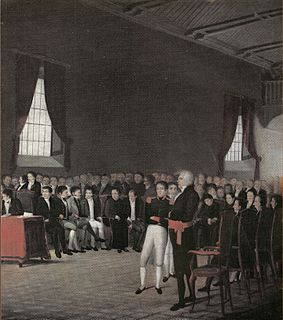 W
WThe history of Venezuela reflects events in areas of the Americas colonized by Spain starting 1522; amid resistance from indigenous peoples, led by Native caciques, such as Guaicaipuro and Tamanaco. However, in the Andean region of western Venezuela, complex Andean civilization of the Timoto-Cuica people flourished before European contact. In 1811, it became one of the first Spanish-American colonies to declare independence, which was not securely established until 1821, when Venezuela was a department of the federal republic of Gran Colombia. It gained full independence as a separate country in 1830. During the 19th century, Venezuela suffered political turmoil and autocracy, remaining dominated by regional caudillos until the mid-20th century. Since 1958, the country has had a series of democratic governments. Economic shocks in the 1980s and 1990s led to several political crises, including the deadly Caracazo riots of 1989, two attempted coups in 1992, and the impeachment of President Carlos Andrés Pérez for embezzlement of public funds in 1993. A collapse in confidence in the existing parties saw the 1998 election of former coup-involved career officer Hugo Chávez and the launch of the Bolivarian Revolution, beginning with a 1999 Constituent Assembly to write a new Constitution of Venezuela. This new constitution officially changed the name of the country to República Bolivariana de Venezuela.
 W
WThe Bolivarian countries are six Hispanic American countries whose republican origin is attributed to the ideals of Simón Bolívar and independence war led by the Venezuelan military in the viceroyalties of New Granada and Peru.
 W
WThe Captaincy General of Venezuela, also known as the Kingdom of Venezuela, was an administrative district of colonial Spain, created on September 8, 1777, through the Royal Decree of Graces of 1777, to provide more autonomy for the provinces of Venezuela, previously under the jurisdiction of the Audiencia of Santo Domingo and then the Viceroyalty of New Granada. It established a unified government in political (governorship), military, fiscal (intendancy), ecclesiastical (archdiocese) and judicial (audiencia) affairs. Its creation was part of the Bourbon Reforms and laid the groundwork for the future nation of Venezuela, in particular by orienting the province of Maracaibo towards the province of Caracas.
 W
WThe Royal Guipuzcoan Company of Caracas was a Spanish Basque trading company in the 18th century, operating from 1728 to 1785, which had a monopoly on Venezuelan trade. It was renamed in 1785 the Royal Philippine Company.
 W
WThe Congress of the Republic, also known as the National Congress, represented the Venezuelan Legislative Branch until 1999. It had a bicameral composition: a Chamber of Senators and a Chamber of Deputies. The last president of the Chamber of Senators was Luis Alfonso Dávila, elected senator in the State of Anzoátegui by the Socialist-leaning party Movimiento Quinta República; the last president of the Chamber of Deputies was Henrique Capriles Radonski, who was elected deputy in the State of Zulia by the Christian Socialist party COPEI.
 W
WCoquivacoa or Coquibacoa is an indigenous name for an area in north-west Venezuela - either the Gulf of Venezuela or Lake Maracaibo or possibly the wider region. It may also be the name of an indigenous people itself, in particular the people fought by Ambrosius Ehinger before his 1529 establishment of Maracaibo; the name "Maracaibo" may derive from a Coquivacoa chieftain killed by Ehinger. This people may be related to the Wayuu or the Caquetio people.
 W
WDios y Federación is considered the traditional state motto of Venezuela. It was first used as the rallying cry of the rebel forces during the Federal War, and it was subsequently incorporated into the country's coat of arms after the conflict ended in 1863.
 W
WThe Discovery of Guiana is a book by Sir Walter Raleigh, who wrote this account one year after his 1595 journey to "Guiana", the Venezuelan region of Guayana. He also visited Trinidad. The book includes some material of a factual nature, but postulates the existence of a gold-rich civilisation on the basis of little evidence.
 W
WThe Federal War — also known as the Great War or the Five Year War — was a civil war (1859–1863) in Venezuela between the Conservative party and the Liberal party over the monopoly the Conservatives held over government positions and land ownership, and their intransigence to granting any reforms. This drove the Liberals – known as the Federalists – to look for greater autonomy for the provinces: a new federalism for Venezuela, as it were. It was the biggest and bloodiest civil war that Venezuela had since its independence from Spain on 5 July 1811. Hundreds of thousands died in the violence of the war, or from hunger or disease, in a country with a population of just over a million people.
 W
WNikolaus Federmann was a German adventurer and conquistador in the colonies of Venezuela and Colombia. He is a significant figure in the history of Klein-Venedig (1528–1546), the concession of Venezuela Province that Charles I of Spain granted to the Welser banking family.
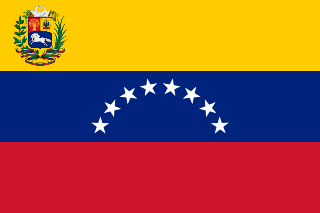 W
WThe Fifth Republic of Venezuela, commonly known as the Bolivarian Republic of Venezuela, is the period in contemporary Venezuelan history from 1999 with the election of Hugo Chávez to the presidency and the installation of his Bolivarian Revolution, to the present day.
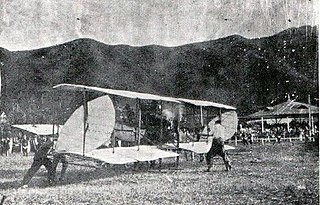 W
WThe first aerial flight over Venezuela was carried out in Caracas on 29 September 1912, by the American pilot Frank E. Boland and his assistant Charles Hoeflich, in a biplane designed by Boland, constructed of wood and fabric with a 60 hp (45 kW) engine and weighing 300 kg (660 lb).
 W
WThe First Republic of Venezuela was the first independent government of Venezuela, lasting from 5 July 1811, to 25 July 1812. The period of the First Republic began with the overthrow of the Spanish colonial authorities and the establishment of the Junta Suprema de Caracas on 19 April 1810, initiating the Venezuelan War of Independence, and ended with the surrender of the republican forces to the Spanish Captain Domingo de Monteverde. The congress of Venezuela declared the nation's independence on 5 July 1811, and later wrote a constitution for it. In doing so, Venezuela is notable for being the first Spanish American colony to declare its independence.
 W
WThe Generation of 1928 was a group of Venezuelan students who led protests in Caracas in 1928 against the dictatorship of Juan Vicente Gómez. Many politicians prominent in Venezuela's transition to democracy took part in the protests. They include Rómulo Betancourt, Jóvito Villalba, Juan Oropeza, Joaquin Gabaldon Marquez, Raúl Leoni, Andrés Eloy Blanco, Miguel Otero Silva, Pedro Sotillo, Francisco Ignacio Romero, Isaac J Pardo, Juan Bautista Fuenmayor, Germán Suárez Flamerich, and Gustavo Machado, and Antonia Palacios.
 W
WGran Colombia is the historiographical designation for the state, then known simply as Colombia, that encompassed much of northern South America and part of southern Central America from 1819 to 1831. The state included the territories of present-day Colombia, Ecuador, Panama and Venezuela, and parts of northern Peru and northwestern Brazil. The term Gran Colombia is used historiographically to distinguish it from the current Republic of Colombia, which is also the official name of the former state.
 W
WGuaicaipuro is a legendary native (indigenous) Venezuelan chief of both the Teques and Caracas tribes. Though known today as Guaicaipuro, in documents of the time his name was written Guacaipuro.
 W
WGuayana Province (1585−1864) was a former province of Spanish Colonial Venezuela and independent Venezuela, located in the Guyana region of northeastern South America.
 W
WVenezuela is one of the world's largest exporters of oil and has the world's largest proven oil reserves at an estimated 296.5 billion barrels as of 2012.
 W
WKlein-Venedig or Welserland was the most significant territory of the German colonization of the Americas, from 1528 to 1546, in which the Welser banking family of the Free Imperial City of Augsburg obtained colonial rights in the Province of Venezuela in return for debts owed by Emperor Charles V, who was also King of Spain. In 1528, Charles V gave the Welser a contract to explore, rule and colonize the area in his name with the primary motivation of searching for the legendary golden city of El Dorado. The venture was led at first by Ambrosius Ehinger, who founded Maracaibo in 1529. After the deaths of Ehinger (1533) and then his successor Georg von Speyer (1540), Philipp von Hutten continued exploration in the interior, and in his absence from the capital of the province the crown of Spain claimed the right to appoint the governor. On Hutten's return to the capital, Santa Ana de Coro, in 1546, the Spanish governor Juan de Carvajal had von Hutten and Bartholomeus VI. Welser executed. King Charles I revoked Welser's charter.
 W
WLake Parime or Lake Parima is a legendary lake located in South America. It was reputedly the location of the fabled city of El Dorado, also known as Manoa, much sought-after by European explorers. Repeated attempts to find the lake failed to confirm its existence, and it was dismissed as a myth along with the city. The search for Lake Parime led explorers to map the rivers and other features of southern Venezuela, northern Brazil, and southwestern Guyana before the lake's existence was definitively disproved in the early 19th century. Some explorers proposed that the seasonal flooding of the Rupununi savannah may have been misidentified as a lake. Recent geological investigations suggest that a lake may have existed in northern Brazil, but that it dried up some time in the 18th century. Both "Manoa" and "Parime" are believed to mean "big lake".
 W
WLake tankers were small specially designed shallow-draft tanker ships that carried the crude oil, pumped from beneath Lake Maracaibo in Venezuela, to the three off-shore refineries located on the Dutch islands of Aruba and Curaçao.
 W
WA Caudillo is part of the larger Iberian tradition of authoritarian leaders, with roots in the Iberian past, particularly in the Reconquista. A number of military leaders who were part of the Spanish American struggle for independence took on political roles in during the establishment of new sovereign nation-states. The establishment of military strong men as the head of new national governments did not generally come via elections, but many did have strong popular support. Caudillos often have a personalist connection with their popular followers, combining charisma and machismo ("manliness"), access to political and economic power. They often desire to legitimize their rule. Many caudillos brought order to their areas of control, but also resorted to violence with their armed supporters to achieve it. The early nineteenth century has been considered the "Age of Caudillos," but authoritarian regimes existed in the twentieth century as well, with caudillismo casting a long shadow.
 W
WThe Archdiocese of Maracaibo is an Archdiocese in Venezuela. Since November 2000, its Archbishop has been Ubaldo Ramón Santana Sequera. The city of Maracaibo, the second largest in Venezuela, has a population of approximately 2,800,000. The Archdiocese covers a total area of 10,761 square kilometers in Zulia State.
 W
WSantiago Mariño Carige Fitzgerald, was a nineteenth-century Venezuelan revolutionary leader and hero in the Venezuelan War of Independence (1811–1823). He became an important leader of eastern Venezuela and for a short while in 1835 seized power over the new state of Venezuela.
 W
WThe military and political career of Simón Bolívar, which included both formal service in the armies of various revolutionary regimes and actions organized by himself or in collaboration with other exiled patriot leaders during the years from 1811 to 1830, was an important element in the success of the independence wars in South America. Given the unstable political climate during these years, Bolívar and other patriot leaders, such as Santiago Mariño, Manuel Piar, José Francisco Bermúdez and Francisco de Paula Santander often had to go into exile in the Caribbean or nearby areas of Spanish America that at the moment were controlled by those favoring independence, and from there, carry on the struggle. These wars resulted in the creation of several South American states out of the former Spanish colonies, the currently existing Venezuela, Colombia, Ecuador, Peru and Bolivia, and the now defunct Gran Colombia.
 W
WNew Andalusia Province or Province of Cumaná (1537–1864) was a province of the Spanish Empire, and later of Gran Colombia and Venezuela. It included the territory of present-day Venezuelan states Sucre, Anzoátegui and Monagas. Its most important cities were the Capital City Cumaná and New Barcelona.
 W
WPedro Alonso Niño was a Spanish explorer. He piloted the Santa María during Christopher Columbus's first voyage to the Americas in 1492, and accompanied him on his third voyage in 1498 to Trinidad.
 W
WNueva Cádiz is an archaeological site and former port town on Cubagua, off the coast of Venezuela. First established in 1500 as a seasonal settlement, by 1515 it had become a year-round permanent town. it was one of the first settlements in the Americas. The settlement was given the name Nueva Cádiz when it was incorporated as a city in 1528.
 W
WJosé Núñez de Cáceres y Albor was a Dominican politician and writer. He is known for being the leader of the independence movement against Spain in 1821 and as the only president of the short-lived Republic of Spanish Haiti, which lasted from December 1, 1821 to February 9, 1822. This period is also known as the ephemeral independence because it quickly ended two months later with the Unification of Hispaniola under the Haitian government. Shortly before these events, while Spain exercised a perfunctory rule over the east side of Hispaniola, Núñez de Cáceres pioneered the use of literature as a weapon for social protest and anti-colonial politics. He was also the first Dominican fabulist, and one of the first criollo storytellers in Spanish America. Many of his works appeared in his own satirical newspaper, El Duende, the second newspaper created in Santo Domingo.
 W
WAlonso de Ojeda was a Spanish explorer, governor and conquistador. He travelled through Guyana, Venezuela, Trinidad, Tobago, Curaçao, Aruba and Colombia. He navigated with Amerigo Vespucci who is famous for having named Venezuela, which he explored during his first two expeditions, for having been the first European to visit Guyana, Curaçao, Colombia, and Lake Maracaibo, and later for founding Santa Cruz.
 W
WThis is a survey of the postage stamps and postal history of Venezuela.
 W
WJaime Lusinchi served as President of Venezuela from 1984 to 1989 for Democratic Action.
 W
WLuis Herrera Campins served as President of Venezuela from 1979 to 1984.
 W
WRaleigh's El Dorado expedition, also known as Raleigh's first voyage to Guiana, was an English military and exploratory expedition led by Sir Walter Raleigh that took place during the Anglo-Spanish War in 1595. The expedition set out in February 1595 to explore the Orinoco River on the northeast tip of South America in an attempt to find the fabled city of El Dorado.
 W
WAntonio Ricaurte was a patriot of the Independence of Colombia and Venezuela and captain of Bolívar's army. He is remembered as the martyr of the Battle of San Mateo, where, in a heroic action, he blasted an enemy stronghold by immolating himself.
 W
WThe Roman Catholic Church in Venezuela comprises nine archdioceses, three vicariates, a military ordinariate, and two Eastern Rite exarchates under the spiritual leadership of the Pope, the Curia in Rome and the Venezuelan Bishops Conference.
 W
WThe Rupununi Uprising was a secessionist insurrection in Guyana that began on 2 January 1969. It was recognized as the largest threat to Guyana's national security when Venezuela disputed territorial control of the Guayana Esequiba, amounting to two-thirds of Guyana's territory. Occurring less than two years after Guyana’s independence from the United Kingdom, it constituted the country’s earliest and most severe test of statehood and social solidarity. The uprising was ultimately dispersed by the Guyana Defence Force.
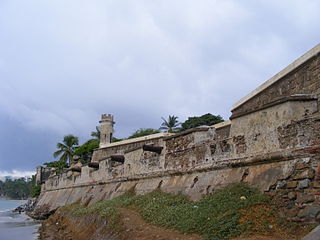 W
WSan Carlos de Borromeo Fortress is a colonial fortress in the Bay of Pampatar in the northeast of Isla Margarita, Venezuela. It was completed in 1684 for protection against the constant threat of pirates. The fortress was ransacked several times before Venezuela gained independence from Spain. Today the castle has been restored and serves as a museum.
 W
WRómulo Betancourt won the 1958 Venezuelan general elections for Democratic Action and held the Presidency of Venezuela from February 13, 1959, to March 13, 1964. Betancourt started his second presidency as a moderate, except on the issue of dictatorships, instituting the idealistic foreign policy that Venezuela would not recognize dictatorial government anywhere, particularly in Latin America, but including the USSR. One significant domestic policy was land reform, with land largely from expropriated private landholdings redistributed to around 200,000 families.
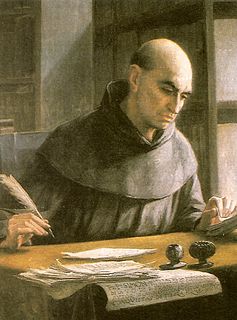 W
WFray Pedro Simón was a Spanish franciscan friar, professor and chronicler of the indigenous peoples of Colombia and Venezuela, at the time forming the New Kingdom of Granada. Pedro Simón is one of the most important Muisca scholars forming the basis for later scholars such as Lucas Fernández de Piedrahita, Alexander von Humboldt, Javier Ocampo López and many others.
 W
WGeneral Juan Antonio Sotillo (1790–1878) was a nineteenth-century military leader from Venezuela. During his long life, uncommon for a military leader at the time, he served under the army of Venezuelan general Simón Bolívar, as well as in most of Venezuela's 19th century civil wars and military revolts.
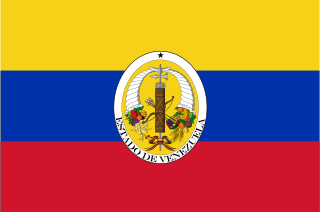 W
WThe State of Venezuela was the official name of Venezuela adopted by the constitution of 1830, during the government of Jose Antonio Páez. The name was maintained until 1856 when in the constitution promulgated in that year it changes the official name of the country to Republic of Venezuela. In the Constitution of 1864, the United States of Venezuela was established.
 W
WThe Sucre Family is a prominent political family of Venezuela.
 W
WThe Maletinazo, Valijagate, or suitcase scandal was a 2007 scandal involving Venezuela and Argentina, souring friendship between the countries.
 W
WThe Supreme Junta was the institution that governed the Captaincy General of Venezuela following the forced resignation of the Captain General Vicente Emparán on April 19, 1810, marking the beginning of the Venezuelan War of Independence. It lasted until March 2, 1811, when the first constituent congress of the First Republic of Venezuela was established.
 W
WThe United States of Venezuela was the official name of Venezuela, adopted in its 1864 constitution under the Juan Crisóstomo Falcón government. This remained the official name until 1953, when the constitution of that year renamed it the Republic of Venezuela. In 1999 under newly elected president Hugo Chavez and his modification to the Constitution, Venezuela's official name became the Bolivarian Republic of Venezuela.
 W
WThe Colombia–Venezuela Boundary Treaty of 1941 officially Border Demarcation Agreement and Navigation of the Common Rivers between Colombia and Venezuela and unofficially as the López de Mesa-Gil Borges Treaty, it was an agreement signed between the governments of Colombia and Venezuela on the land border limits on April 5, 1941 in Colombian city of Cúcuta, by the Ministers of Foreign Relations of Venezuela, Esteban Gil Borges, and Colombia, Luis López de Mesa.
 W
WThe Venezuelan Declaration of Independence is a statement adopted by a congress of Venezuelan provinces on July 5, 1811, through which Venezuelans made the decision to separate from the Spanish Crown in order to establish a new nation based on the premises of equality of individuals, abolition of censorship and dedication to freedom of expression. These principles were enshrined as a constitutional principal for the new nation and were radically opposed to the political, cultural, and social practices that had existed during three hundred years of colonization.
 W
WThe peso was a currency of Venezuela until 1874.
 W
WThe venezolano was the currency of Venezuela between 1872 and 1879. It was divided into 100 centavos, although the names céntimo and centésimo were also used. Venezolano was also the name of two currencies planned in 1854 and 1865.
 W
WThe Venezuelan War of Independence (1810–1823) was one of the Spanish American wars of independence of the early nineteenth century, when independence movements in Latin America fought against rule by the Spanish Empire, emboldened by Spain's troubles in the Napoleonic Wars.
 W
WThe Viceroyalty of New Granada was the name given on 27 May 1717, to the jurisdiction of the Spanish Empire in northern South America, corresponding to modern Colombia, Ecuador, and Venezuela. Created in 1717 by king Felipe V, inside of a new territorial control policy, it was suspended in 1723 due to financial problems and was restored in 1739 until the independence movement suspended it again in 1810. The territory corresponding to Panama was incorporated later in 1739, and the provinces of Venezuela were separated from the Viceroyalty and assigned to the Captaincy General of Venezuela in 1777. In addition to these core areas, the territory of the Viceroyalty of New Granada included Guyana, southwestern Suriname, parts of northwestern Brazil, and northern Peru.
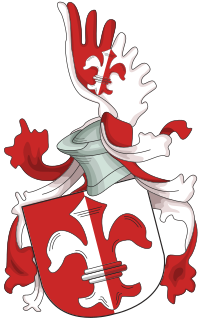 W
WWelser was a German banking and merchant family, originally a patrician family from Augsburg, that rose to great prominence in international high finance in the 16th century as bankers to the Habsburgs and financiers of Charles V, Holy Roman Emperor. Along with the Fugger family, the Welser family controlled large sectors of the European economy, and accumulated enormous wealth through trade and the German colonization of the Americas. The family received colonial rights of the Province of Venezuela from Charles V, who was also King of Spain, in 1528, becoming owners and rulers of the South American colony of Klein-Venedig, but were deprived of their rule in 1546. Philippine Welser (1527–1580), famed for both her learning and her beauty, was married to Archduke Ferdinand, Emperor Ferdinand I's son.